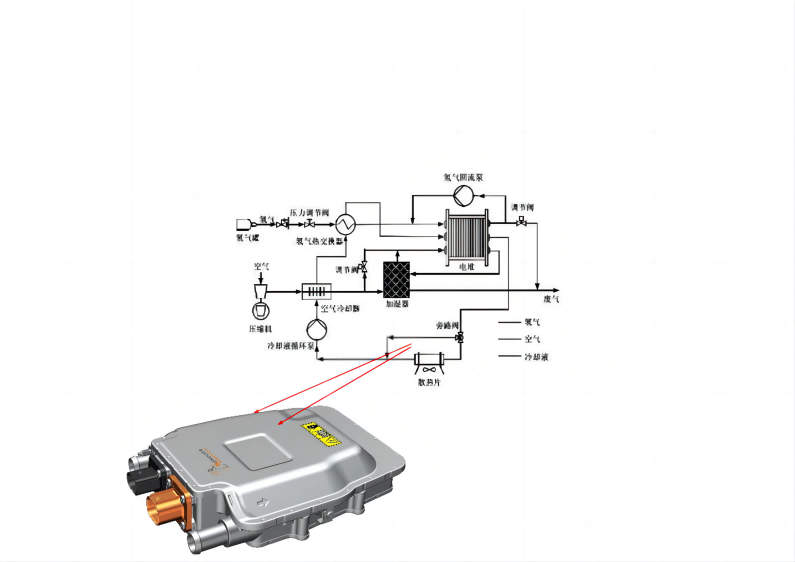Fuel cell heavy-duty trucks have a large power demand, while the power of a single stack of an electric stack is relatively small. Currently, a two-way parallel technical solution is adopted, and its thermal management system also adopts two relatively independent solutions. When the temperature of the stack is too low, thermal expansion and contraction will cause the catalyst to fall off from the membrane, affecting the performance of the fuel cell. When the stack temperature is too high, the PT in the catalyst is sintered, the catalyst particles are changed, the surface area is reduced, and the performance of the fuel cell is reduced. Therefore, the stack thermal management system includes the stack cooling system and the stack heating system, as shown in Figure 2: a schematic diagram of the fuel cell thermal management system(TMS).
◆The power consumption remains the same
Based on its precise control accuracy and response speed, the thin-film electric heater can consume the early unstable electric energy during the hydrogen stack ignition stage, operate as a system energy buffer, and realize the system preheating function at the same time.
◆Low electrical conductivity
Normal temperature 25°C, initial conductivity <1μS/cm,
After standing for 12 hours, the conductivity is less than 10μS/cm.
◆High cleanliness standard
Water channel metal or non-metal maximum particle size: 0.5*0.5*0.5mm,
The total weight is ≤5mg, meeting the requirements of mainstream hydrogen energy customers.

Post time: Sep-05-2023




